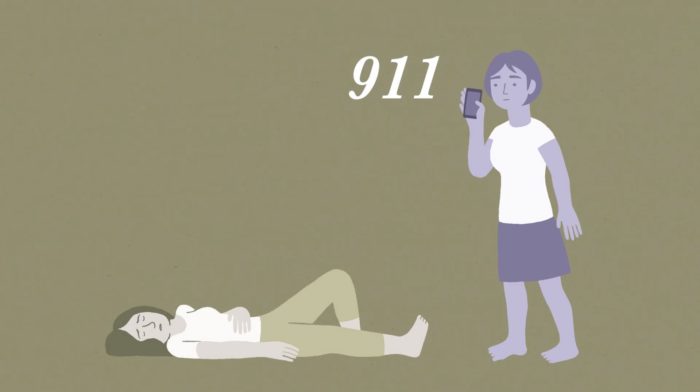The Signs of a Stroke
During a stroke, every minute counts! Fast treatment can lessen the brain damage that a stroke can cause. By knowing the signs and symptoms of stroke, you can take quick action and perhaps save a life. Stroke affects more than fifty-thousand Canadians every year. The chances of survival and recovery from a stroke depend on how soon it’s treated, so as a caregiver it’s important that you’re able to recognize the symptoms and act fast. In this video, we’ll explain some of the common signs of a stroke, and give you a few tips on how to help prevent one from happening to the person you’re caring for.
Stroke affects more than fifty-thousand Canadians every year. The chances of survival and recovery from a stroke depend on how soon it’s treated, so as a caregiver it’s important that you’re able to recognize the symptoms and act fast.
In this video, we’ll explain some of the common signs of a stroke, and give you a few tips on how to help prevent one from happening to the person you’re caring for.
A stroke happens when blood stops flowing to the brain, either from a blockage in the blood vessels or from a blood vessel bursting and leaking into the brain tissues.
Strokes are sometimes confused with heart attacks, in which the flow of blood to part of the heart is slowed or stopped. Both are medical emergencies, but a stroke can have more serious long-term effects on the body if not treated immediately.
If you suspect that the person you’re caring for maybe having one you should call 911 right away.
Although there are many signs of a stroke, not all of them are obvious. However, remembering the F.A.S.T. method can help save the person you’re caring for’s life.
F stands for FACE… does one side of their face look droopy? Ask them to smile and check to see whether they’re able to turn up both sides of their mouth. If not, this may be a sign of stroke.
A stands for ARMS… can they move both of their arms with equal strength? Ask them to raise their arms above their head and check to see whether one arm works more than the other.
S stands for SPEECH… are they talking normally, or does their speech seem slurred or mumbled? Have a conversation with them and listen for any unusual qualities in their voice.
T stands for TIME… if you notice any of the signs of stroke we’ve just described, call 911 right away.
Even if you aren’t sure whether someone is having a stroke you should still call for medical help. The more time that passes between having a stroke and receiving treatment, the less effective the treatment will be.
If you think the person you’re caring for might be having a stroke, guide them to somewhere safe where they won’t hurt themselves if they fall. If possible, have them lie down on their side in a comfortable spot.
Do your best to remain calm, and monitor their symptoms by chatting with them until help arrives.
The best way to help the person you’re caring for avoid having a stroke is to see that they make healthy lifestyle choices.
They should try to stick to a healthy, balanced diet and exercise on a daily basis, even if it’s just a walk around the neighbourhood.
Limiting or stopping the use of tobacco and alcohol is another key step in preventing stroke, so if they regularly smoke or drink talk to them about quitting or cutting back.
Managing stress can also help to prevent stroke, so encourage them to try stress-relief techniques like meditation or deep breathing.
Now that you know how to recognize the signs of a stroke, keep them in mind and act quickly as soon as you spot one. Every moment counts, so if you think the person you’re caring for might be having a stroke call 911 right away. Remember, the sooner you get them medical attention, the better chance they’ll have for recovery.
For additional caregiver support and resources, be sure to visit out CareChannel.






